The topic of edible landscaping in Georgia is fairly timely. The paranoid community is on edge because of potential supply chain issues with regard to food. No one is saying “never fear, all is well”. So, it makes some sense to at least be alert to this important issue.
At the Firefly, pretty Bed and Breakfast near Atlanta, we are running a learning organization.
All of this being the case, we’ve done a bit of a survey at our place. We may need something to serve the hordes of zombies who will no doubt descend on Madison. Actually we use a lot of these plants in daily cooking and decorating at our place, and we aren’t worried about zombies.
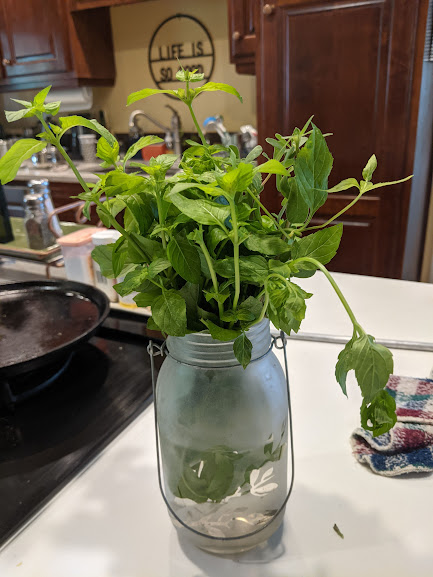
Back Story
We have been told by a landscape architect that we have something that is called “unmanicured abundance”. This is to say, a lot of the plants we have growing up around the place are lush, and either edible, or can be converted into something edible. The reality is, it is just barely under control.
We’ve been gradually planting this stuff over the last few years. We like landscaping anyway, and all the better if it can be eaten. Because we are patient, we’re now starting to see a little benefit from some of this effort. This is part of what we call “human-scale living” which is understanding the small scale resources around us and taking advantage of them.
If we wanted to get into food production we could. We’re also focusing on plants that don’t take much work.
Here, in no particular order of importance, is some edible landscaping around our place in Zone 8B flat, humid part of Georgia.
Additional Reading
Here’s a recent post about edible weeds in Georgia that you might like.
Disclaimer
Oh, yeah, do we have to tell you that if we claim that something has a health benefit, even though it is common knowledge, it is for entertainment purposes only? And, like all health stuff, you should consult a doctor before eating any weeds from the yard for any condition. And also, you should make sure that you have properly identified these weeds before you eat a lot of poison ivy?
Part of why we’re doing this stuff is for this very reason. We’re living in a world where doctors and lawyers have made us afraid to eat the local plants. This is because a nice income can be derived by not making you healthy and suing someone.
Don’t get us started on the Georgia Food Safety Law which we blogged awhile back.
Herbs
We have a big collection of herbs around the place, the number one of which is mint. The original mint came with the house, and even the worst construction guy in the world couldn’t kill it. You can use it in tea, it is an important ingredient in various types of cooking, and so abundant that it is nearly a weed.
We also have basil, parsley, bay, and rosemary, all of which can be dried and are reputed to have health benefits. This allows us to use it as flavoring for whatever meat and meat by-products we can come by.
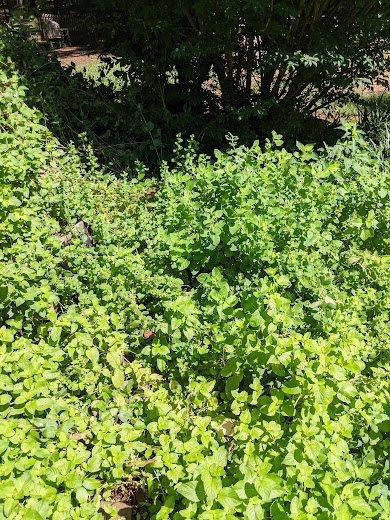
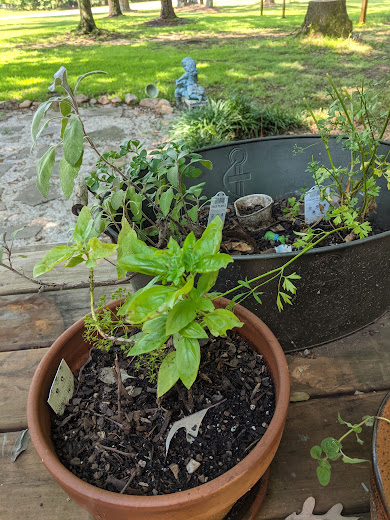
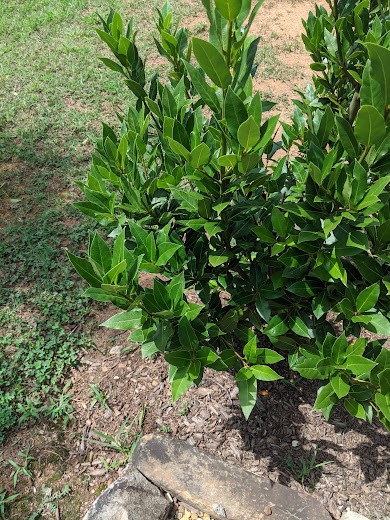
Echinacea
This comes under the category of “unusual plants to have around that supposedly have medicinal value.”
In the case of Echinacea, you’re able to brew up a tea, or eat some of the leaves to get an anti-depressant effect. According to the reference below, it is considered one of those fun plants that builds up your immune system.
These bees seem to like it, and the flowers are pleasant to have around.
Berries
One of the original products a couple of years ago was to buy a lot of berry plants. Some of them did fine, and some did not do so fine, because of the conditions out here.
The survivors have been blueberries and blackberries, which can both be preserved if we are so inclined.
The drawback on these thus far is that they only give berries once a year, and we like to eat all year round, and so preservation is a bit of an important issue. At some point, we’ll have enough abundance that this will be a fun thing to do.
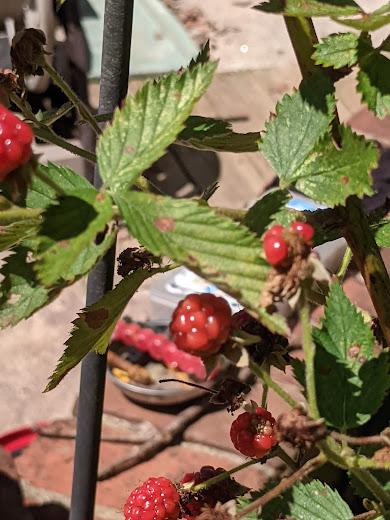
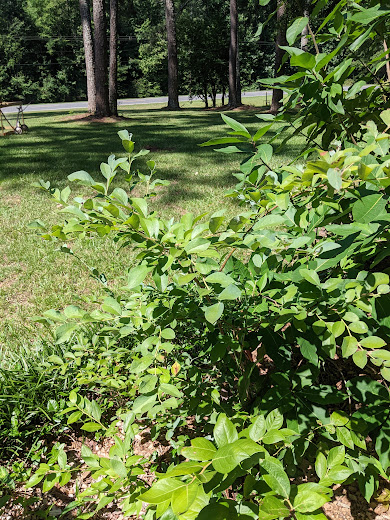
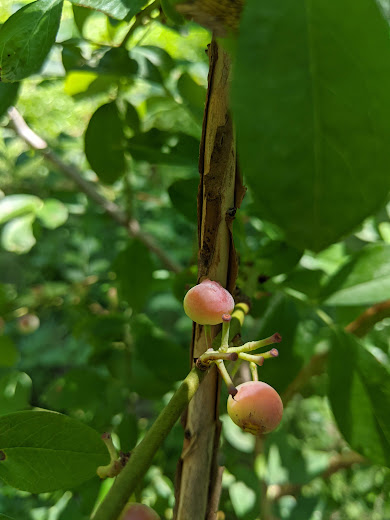
Figs and Grapes
I am putting these into the same category because they have something in common. They were both domesticated originally at about the same time, about 6000 years ago. This would make these “civilizing plants” that helped in the development of human culture.
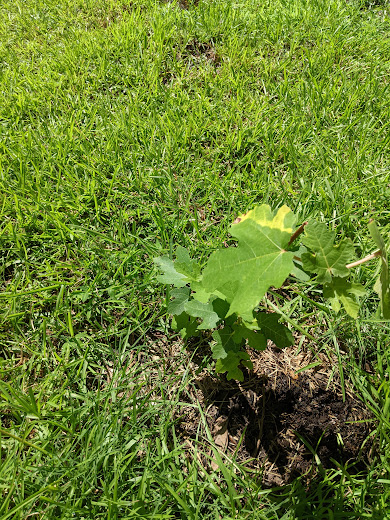
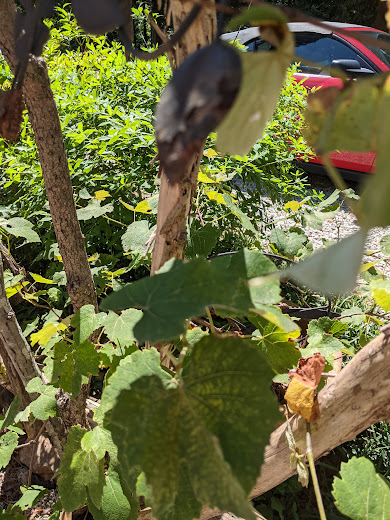
The grapevines we have are still a few years from giving us a grape or two. The figs are going to take a long time, because they need a tree. We can’t really count on these for caloric input yet, but there are options.
In this area, the more generally acceptable grape variety is Muscadines. We have looked into this a bit. The plants we have now are the “concord” variety, which are not known for doing well in this area.
Yard Weeds
We have a couple of edible yard weeds around. The ultimate one of these is dandelion, which is moderately well known as a general purpose green. We’re actually carefully nurturing these by not trying to kill them with expensive herbicide, and taking our time not to mow them before they go to seed.
Based on the video from Dr. Berg, there are a number of interesting positive health effects, especially when the leaves are made into tea.
No one can remember planting purslane, but we have a lot of it growing in the courtyard. We tried hard to burn it out a few years ago unsuccessfully. Purslane is considered a superfood, and is growing in abundance in our rocky, sun drenched courtyard. So, we’re now declaring gardening brilliance and collecting these for a shot of supplemental green for salads.
Moringa
Moringa is considered a “Miracle Tree” because the leaves and other parts of it are also considered to have various health benefits. There is one of these growing in the old bathtub garden we have in back. All of the parts of the tree are edible, including seeds, leaves and stems, which are called “drumstick plants” because you can eat the seed pod.
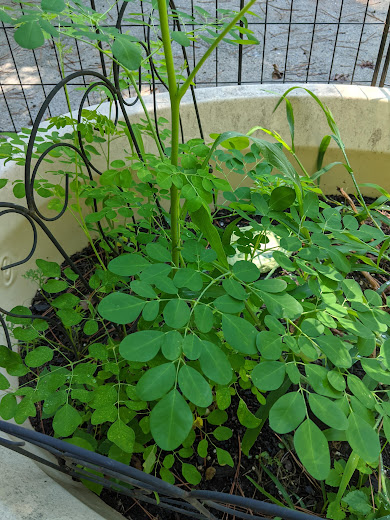
The roots are considered a substitute for horseradish, which has a hard time growing in the area.
So why isn’t there a big row of moringa trees in the backyard somehow? Why indeed. For now, this one is not going to give too much nutritional value.
Water Plants
We have a water feature with a lot of these pretty water lilies in it. Come to find out that parts of the water lily plant are edible. Are we going to get much nutrition out of it? Well, the jury is still out. We all know that frog legs are edible, however.
The Kitchen Garden
We try to do a little kitchen garden every year. We choose not to brag about it too much because it required a little investment in time and effort. There are a few tomatoes, and a giant squash of some type encroaching on the yard. Our crop is diminished this year because one of our converters got out of her containment and ate the garden.
It’s nearly grown back. There was kale and lettuce for awhile.
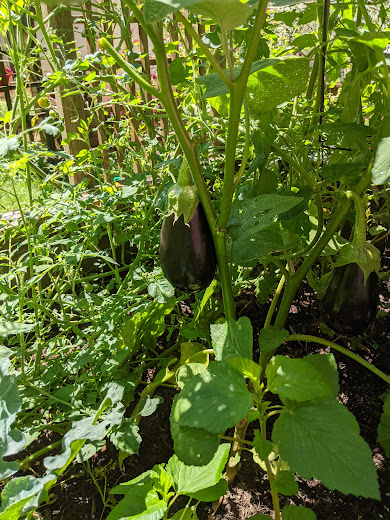
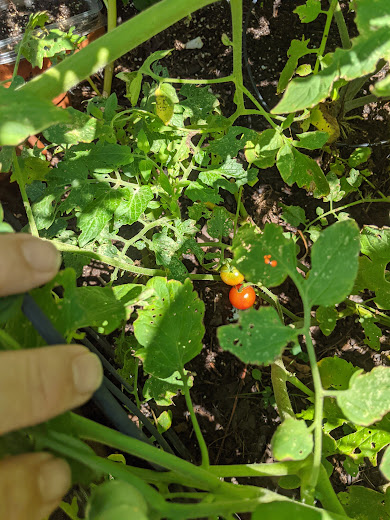
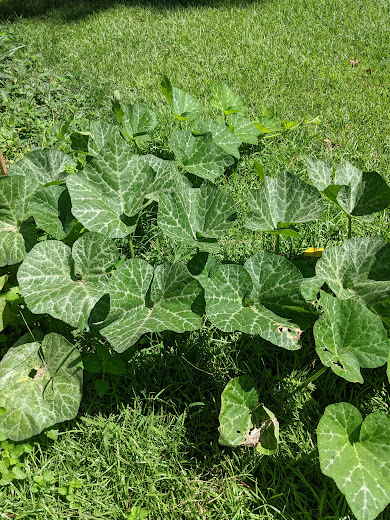
Converters
Okay then, we have the issue of “converting.” Here is how it works.
We have about an acre of lawn, which we can’t eat, and it costs us money to mow. If we can have some “converters” around, they can help us convert the grass, which we like but not really, into something edible.
The number one converter at the place right now is the humble chicken, who, thanks to the chicken tractor, converts the front yard into eggs. Chickens are not herbivores. We need to supplement them with a little feed and some minerals. But, thus far, the work group we have in front has out-laid the chickens we have in the chicken coop.
It’s the gift that keeps on giving.
We have a couple of other converters in the place right now which we’ll tell you about later which can convert the grass into other edible stuff, at some sacrifice on their part. The chickens are not harmed by giving us a little protein.
Edible Landscaping in Georgia
So if things got to a certain point tomorrow, could we get our 2000 calories a day out of the lawn? Unlikely. Could we, over a period of time, grow enough of this stuff to provide our 2000 calories a day? Possibly. For the time being we are going to have to supplement our little survival island with some foraging.
That will be the next story: More edible landscaping ideas in Georgia that we’re going to try.
Do you want to come and tour the place, and see a little of our unmanicured abundance? Yes, if you, a city slicker, want to come out for a weekend and understand all of the edible plants in the place, we will let you look around and do so.
We may even cook up some stuff with site-harvested superfood just because we can. Click the “Book Now” button.
Links and References
Mint
https://www.healthline.com/nutrition/mint-benefits
https://www.webmd.com/diet/health-benefits-mint-leaves
Parsley
https://www.webmd.com/diet/health-benefits-parsley#1
Fig
Echinacea
https://www.nccih.nih.gov/health/echinacea
Dandelion
Purslane
![]()

I love this idea. Whether it becomes a necessity or is just a novelty or somewhere in between, it gives you the chance to gain one more level of independence and self sufficiency